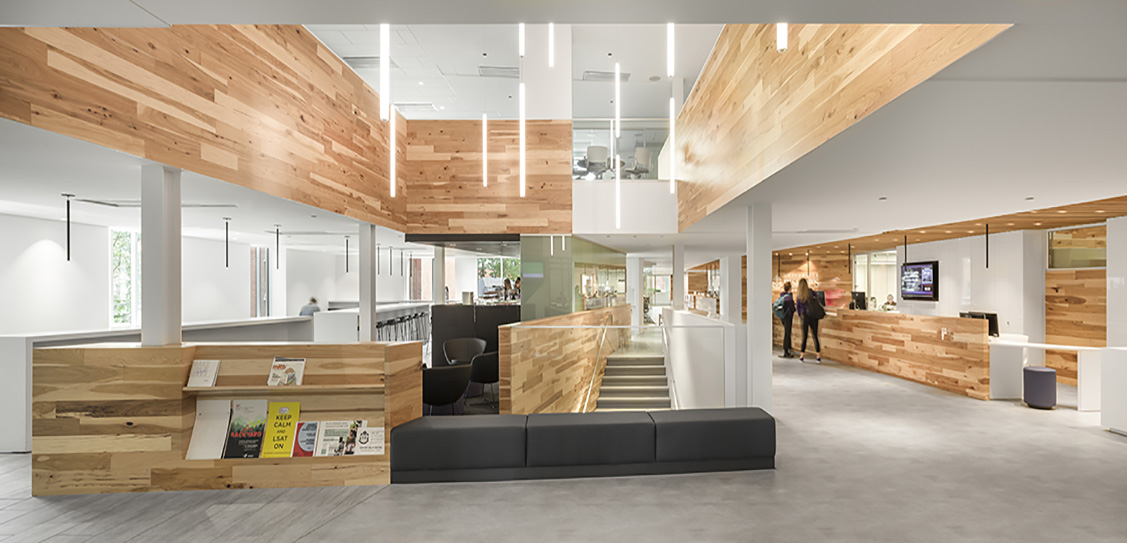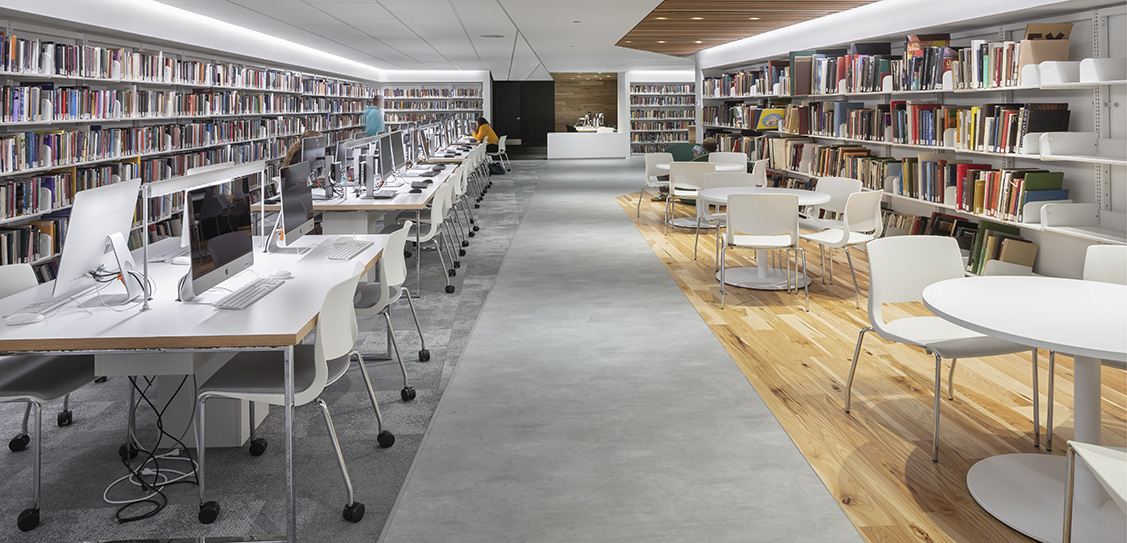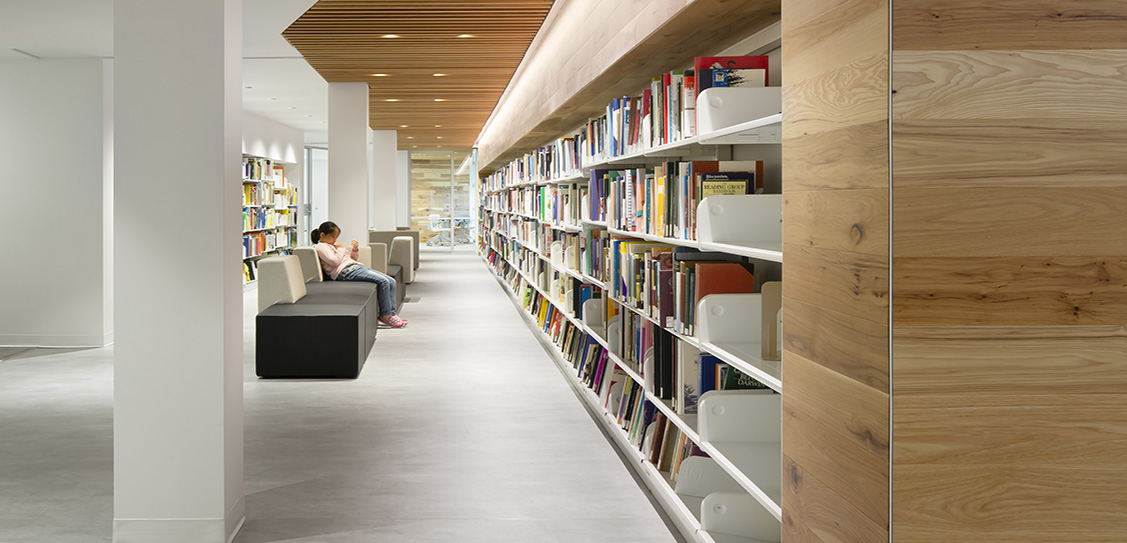Bishop’s University Library was founded in 1958 in Sherbrooke, and serves the 3,500 students of Bishop’s University and Champlain Regional College. Thanks to a redesign by the architectural firm Lemay, with new lighting designed in collaboration with the lighting agency LumiGroup, the library is now a comfortable, well-lit work environment.
The library has three levels: the basement, ground floor and second floor - all were in need of a refresh. Before Lemay turned the Library around, stacks had become so densely packed that they blocked most of the available natural light, despite the ample size of the building’s windows. With its many corridors, the library had become a dusty and confusing labyrinth. The low-ceilinged basement received no natural light at all, adding up to a far from inviting atmosphere.
Lemay and LumiGroup faced a major challenge: the partners had to refresh the library’s identity and turn it into a multifunctional space ideal for study, reading, discussions, meetings and public lectures.
The library is part of Bishop’s University, which is a highly organized and structured academic institution, similar to its larger English-language peers. It is also surrounded by a beautiful forest of lush vegetation and large trees. From the outset, one of our goals was to bring that natural beauty inside the building
Eric Pelletier, LemayUpon entering the library, the large windows and vertical lighting inspire a sense of clarity and serenity. “The L191 pendant lamps by MP Lighting reflect the library’s unique identity. The entrance zone is also the only place where we installed those particular lights,” Eric says.
To make the most of the available natural light, several study rooms with large windows were added to the second floor. At any time of day, students working in these rooms enjoy bright lighting while feeling a sense of immersion in the surrounding landscape.
As well as bridging the inside and outside, the designers wanted to create multifunctional zones while keeping traffic moving smoothly. They built a large wooden spine on each floor which snakes through the entire building, connecting each functional zone. Whether student's destination is a study room, large or small meeting room, desk or reading corner, they can easily find their way.
To separate the zones and give each one a distinctive ambience, LumiGroup specified directional and spotlighting. In the basement, worktables are equipped with low desk lights in the form of L161 linear LED lamps by MP Lighting. The lights are attached to the tables along with their entire length, allowing students to study comfortably for hours on end.
Ondaria ceiling fixtures by Zumtobel illuminate the two reading areas at either end of the building, giving the spaces a warm and relaxing atmosphere. The designers wanted to echo the ’60s-vintage lighting fixtures that had been installed in earlier eras.
This collaboration between Lemay and LumiGroup demonstrates how a close alignment between architectural and lighting concepts can contribute to a project’s success. High-quality lighting is always desirable, but it is crucial to a library because it gives users optimal reading and study conditions. By prioritizing natural light and working with several different fixtures and lamps, the partners successfully transformed the Bishop’s University Library into a versatile, warm and enjoyable space—an accurate reflection of the university.



